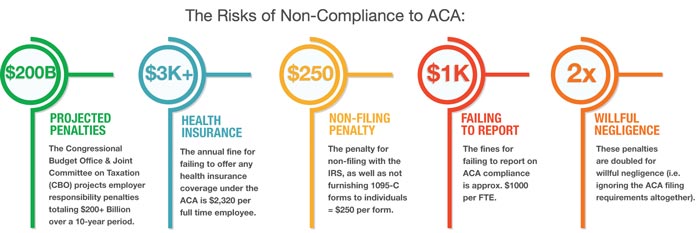
Article contributed by Valiant Solutions
You’ve established your business, your staff pay rates and schedules, and managed the wage and labor compliance to meet the regulations within your location – what other considerations are there with respect to payroll?
There are a few other factors to weigh in, and, while not an exhaustive list, there are some important elements of payroll management which you need to be aware.
1. Taking Advantage of Meal Credits:
Your employees are typically working long shifts and while there are breaks, you typically will want to have the ability to feed them. Some businesses will offer their employees meals during a shift. This comes at a cost to you, the employer, to feed them. With this cost, you can actually take advantage of meal credits. These are significant credits that can be easily integrated into your business, and helps to offset costs within your operations. The biggest challenge in implementing them is simply knowing when and how you can apply them. By having a solution that makes these advantages more visible to your operations, you can take the administrative burden off of research and processes, and have the solution help you to save costs.
This helps to offset the cost if you are taking advantage of meal allowance. If you aren’t recording meal costs and then apply the meal credit practice, the cost can be even more significant.
So, if a total meal credit is $12.50 and you take advantage of the $0.96 savings per meal on top of this, you are saving $13.46 per employee meal. When you multiply this by the number of employees each day that take meals, this can add up to a significant tax advantage.
2. Implementing a Commuter Benefits Program:
Another option for employees is commuter cards. For employees that commute to work, there is a significant cost to make it in, especially when employees work in urban areas that they cannot afford to live in. The commuting cost is a huge strain on employee expenses and can detract from getting good talent. To alleviate this cost, many companies have a commuter benefits program, which seeks to minimize the cost to commute with special cards or transit checks that enable employees to load funds to pay for their commute. These cards are typically loaded by the employer and is deducted from the employee’s paycheck and placed on the card for commuting. So, employees can specify how much they want deducted from their paycheck to be put towards commuting and that will automatically be loaded on to their card or issued as a check each month.
The advantage to this over paying directly for the commute is the tax benefit. The money deducted from their paycheck and loaded on to the cards is before taxes, and help to reduce the overall tax burden for both the employee and the employer. On average an employee can save over 30% on commuting through the use of a commuter card. For 2019, employees can elect to use up to $265 per month on commuting, and $265 per month on parking expenses. So an employee that spends an average of $150/month on commuting can save over $500 per year through using a commuter card.
Similarly, an employer will also benefit in savings as well. Taking commuter expenses out of a paycheck pre-tax will alleviate the overall payroll tax burden in that they are paying less in payroll taxes, since a portion of the funds are taken out pre-tax. Commuter benefits are considered tax-free benefits, not employee wages, so your company can save 7.65% on payroll taxes.
 3. Manage and Track Affordable Care Compliance (ACA):
3. Manage and Track Affordable Care Compliance (ACA):
Another important consideration that a majority of smaller businesses do not consider is the Affordable Care Act (ACA) – also known as “ObamaCare”. The ACA states that businesses employing more than 50 Full Time Employees (FTE) are required to provide some form of medical insurance for employees. This was designed to ensure that employees have access to some level of healthcare from their employer. The provision also requires employers to report healthcare coverage to the Internal Revenue Service (IRS) annually. While there are many other provisions to the law, these are the major areas that companies often fall into challenges with maintaining compliance.
For many companies, compliance to ACA is not usually top-of-mind – especially when you are busy running an operation on a daily basis. The majority of small business either didn’t meet the requirements for ACA, or failed to report – both can be problematic and can result in fines from the IRS. The reason for this? Many small businesses believe they are too small to be “noticed” or simply don’t have the resources and tools to report effectively. Even those companies that do report, if they miss the proper calculations, deductions and itemization, they can still face fines:
- The annual fine for failing to offer any health insurance coverage under the ACA is $2,320 per FTE.
- The annual fine for failing to offer adequate & affordable health insurance coverage under the ACA is $3,480 per FTE.
- The fines for failing to report on ACA compliance is approximately $1000 per FTE
- The penalty for non-filing with the IRS = $250 per form.
- The penalty for not furnishing 1095-C forms to individuals = $250 per form.
The above penalties are doubled for willful negligence (i.e. ignoring the ACA filing requirements altogether).
The key takeaway is to understand that when you hit that 50 FTE watermark in your business, ACA is a very real consideration. There are payroll management solutions that can help to track eligibility for your employees, provide options for benefits, and provide you with options in reporting to the IRS. It’s also a good idea to contract with an employment attorney to consult with you on these matters as well.
4. Meeting the Needs of PayStub Compliance:
With a focus on transparency, New York’s Wage Theft Protection Act (WTPA) pay stub compliance is a directive to provide additional details on an employee’s pay stub that clearly outlines the various elements that make up the total gross to net pay. While an important initiative for communicating clearly on the wages and deductions that make up the wage, this is proving a challenge for businesses in the hospitality industry, NY state in particular. The challenge isn’t in the concept of providing this detail, it is the mechanics on how an employer can complete this using their current payroll management system.
There are many complexities surrounding the ability to display the necessary deductions and wage rates, simply because the hospitality industry – especially in restaurants – have multiple payroll management differences from other markets. These differences make the concept of pay stub compliance difficult to achieve. There are several elements that need to be not only factored into the calculation for a pay stub, but also clearly displayed on the employee’s pay stub. Elements discussed in this guide – blended rates, meal credits, tip credits, overtime, tax deductions and benefits – all need to be properly displayed directly on the pay stub.
You want to find a payroll management system that enables organizations to process error-proof payroll, tie to POS systems and reduce manual efforts in processing. In addition, you want a system that can incorporate pay stub compliance into the payroll management system, enabling organizations to meet (and exceed) the requirements of the WTPA.
Conclusion: Taking the Good with the Bad
Payroll Management and managing a Backoffice operation within your business can be challenging at times. Most owners do not consider these elements when they start out; the focus is on providing a great service to your customers. While this core directive (hopefully) remains, the need to build a payroll management process that takes advantage of potential savings while mitigating potential compliance risks is still a very important part of operations. By understanding the various rules and regulations, you can stay ahead of the curve.
In the end, the best advice is to not go it alone. Whether you implement a payroll management solution, contract with expert consultants, or do your research, the knowledge around these elements becomes a big difference in reducing costs, maximizing profits, and operating smarter.

























